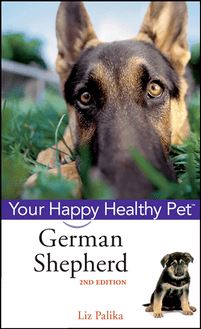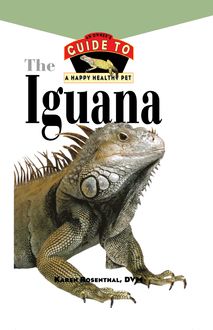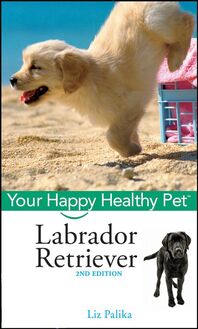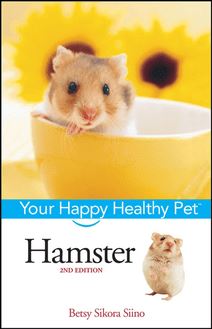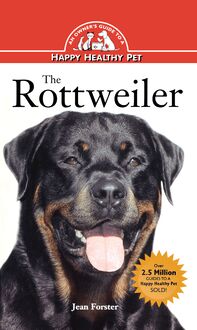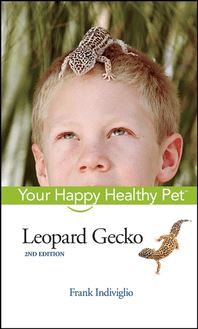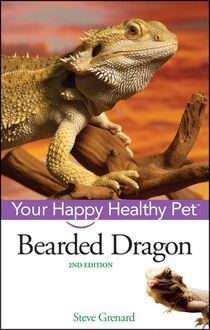The Australian Cattle Dog , livre ebook
104
pages
English
Ebooks
2008
Vous pourrez modifier la taille du texte de cet ouvrage
Obtenez un accès à la bibliothèque pour le consulter en ligne En savoir plus
Découvre YouScribe en t'inscrivant gratuitement
Découvre YouScribe en t'inscrivant gratuitement
104
pages
English
Ebooks
2008
Vous pourrez modifier la taille du texte de cet ouvrage
Obtenez un accès à la bibliothèque pour le consulter en ligne En savoir plus
Publié par
Date de parution
21 avril 2008
Nombre de lectures
2
EAN13
9780470331118
Langue
English
Poids de l'ouvrage
2 Mo
All books contain information on:
- feeding
- housing
- grooming
- health care
- what to expect from the pet
- basic training
Happy, Healthy Pet guides are rich with professional quality color photos and are designed to be enjoyable and easy to learn from.
PART ONE: Welcome to the World of the Australian Cattle Dog.
1. What Is an Australian Cattle Dog?
2. The Australian Cattle Dog's Ancestry.
3. The World According to the Australian Cattle Dog.
PART TWO: Living with an Australian Cattle Dog.
4. Bringing Your Australian Cattle Dog Home.
5. Feeding Your Australian Cattle Dog.
6. Grooming Your Australian Cattle Dog.
7. Keeping Your Australian Cattle Dog Healthy.
PART THREE: Enjoying Your Dog.
8. Basic Training (Ian Dunbar, Ph.D., MRCVS).
9. Getting Active with Your Dog (Bardi McLennan).
10. Your Dog and Your Family (Bardi McLennan).
11. Your Dog and Your Community (Bardi McLennan).
PART FOUR: Beyond the Basics.
12. Recommended Reading.
13. Resources.
Publié par
Date de parution
21 avril 2008
Nombre de lectures
2
EAN13
9780470331118
Langue
English
Poids de l'ouvrage
2 Mo
The
Australian Cattle Dog
Howell Book House
A Simon Schuster Macmillan Company
1633 Broadway
New York, NY 10019
Macmillan Publishing books may be purchased for business or sales promotional use.
For information please write: Special Markets Department, Macmillan Publishing
USA, 1633 Broadway, New York, NY 10019.
Copyright 1998 by Howell Book House
All rights reserved. No part of this book shall be reproduced, stored in a retrieval system, or transmitted by any means, electronic, mechanical, photocopying, recording, or otherwise without written permission from the publisher.
MACMILIAN is a registered trademark of Macmillan, Inc.
Library of Congress Cataloging-in-Publication Data
Buetow, Katherine.
The Australian cattle dog: an owner s guide to a happy, healthy pet / Katherine Buetow.
p. cm.
ISBN 978-1-63056-052-1
Library of congress cataloging-in-publication data available upon request.
Manufactured in the United States of America
10 9 8 7 6 5 4 3 2 1
Series Director: Amanda Pisani
Series Assistant Director: Jennifer Liberts
Book Design by Michele Lasean
Cover Design by Iris Jeromnimon
Illustration by Marvin Van Tiem and Jeff Yesh
Photography.
Front cover by Charles Mercer and back cover by Katherine Buetow
Paulette Braun (Pets by Paulette): 5, 11, 50, 62, 64, 65
Katherine Buetow: 2-3, 8, 17, 29, 32, 34, 40, 43, 55, 61, 71, 79, 92
M. Kathleen Buetow: 72
Deb Casey: i
Lori Herbel: 30
Louis Hizer: 23
Lena Holm: 25
Melissa Hotter: 73
Gary Loescher: 41, 57, 68, 69
Marilyn Painter: 10
Judith E. Strom: 13, 15, 18, 42, 52
John Thomas: 33
Faith Uridel: 9, 20, 27
Jean Wentworth: 46
Lori Whitman: 38-39
Production Team: Stephanie Hammett, Natalie Hollifield, Clint Lahnen, Stephanie Mohler, Dennis Sheehan, Terri Sheehan
Contents
part one Welcome to the World of the Australian Cattle Dog
1 What Is an Australian Cattle Dog?
2 The Australian Cattle Dog s Ancestry
3 The World According to the Australian Cattle Dog
part two Living with an Australian Cattle Dog
4 Bringing Your Australian Cattle Dog Home
5 Feeding Your Australian Cattle Dog
6 Grooming Your Australian Cattle Dog
7 Keeping Your Australian Cattle Dog Healthy
part three Enjoying Your Dog
8 Basic Training by Ian Dunbar, Ph.D., MRCVS
9 Getting Active with Your Dog by Bardi McLennan
10 Your Dog and Your Family by Bardi McLennan
11 Your Dog and Your Community by Bardi McLennan
part four Beyond the Basics
12 Recommended Reading
13 Resources
part one
External Features of the Australian Cattle Dog
chapter 1
What Is an Australian Cattle Dog?
Welcome to the wonderful world of the Australian Cattle Dog. Whether you already share your life with one or are just beginning to investigate these dogs, you are sure to find the breed to be one of the most unique and intelligent members of the canine family. The Australian Cattle Dog is both physically and mentally energetic, fiercely loyal, comically entertaining and above all an incredible companion.
The History of the Breed
The breed is often referred to as the Queensland Heeler, or the Blue or Red Heeler. Both names summarize its heritage and function.
The breed was developed near Queensland, Australia in the mid- to late 1800s as a driving dog that nipped at the heels of livestock to keep them moving (hence the term heeler ). The final combination of dogs used in the development of the breed gave us the two colors of Australian Cattle Dog, red and blue (see chapter 2 ).
The Breed Standard
One good way to learn about this breed, and why it was bred to look and act as it does, is to review the American Kennel Club (AKC) Breed Standard. Think of the standard as a recipe for the ideal Australian Cattle Dog. Much of the breed standard refers to pure working traits. However, though the breed was developed for herding, most of these traits are also desirable for other reasons. What follow are excerpts from the Australian Cattle Dog standard. Since breed standards can be somewhat confusing at times, in each section I have included a commentary to clarify meaning.
Y OU VE G OT THE L OOK !
General Appearance The general appearance is that of a sturdy, compact, symmetrically-built working dog. With the ability and willingness to carry out any task, however arduous, its combination of substance, power, balance, and hard, muscular condition to be such that must convey the impression of great agility, strength, and endurance. Any tendency to grossness or weediness is a serious fault.
Above all, the Australian Cattle Dog is a working dog that must be physically capable of doing the work of many men. Balance is the key in looking at an Australian Cattle Dog-both grossness (bulkiness) and weediness (lightness of bone or legginess) detract from an overall symmetrically built dog and will lead to a lack of stamina.
Head The head, in balance with other proportions of the. dog, and in keeping with its general conformation, is broad of skull and only slightly curved between the ears, flattening to a slight but definite stop. The cheeks are muscular, but not coarse nor prominent, the underjaw is strong, deep and well-developed. The foreface is broad and well filled in under the eye, tapering gradually to a medium length, deep and powerful muzzle. The lips are tight and clean. The nose is black irrespective of the color of the dog.
The Australian Cattle Dog grips low on the heels of stock to get them moving, a tactic that is often followed by a swift backward kick from the livestock. While a good working Australian Cattle Dog should be quick and sensible enough to get out of harm s way in an instant, the head of an Australian Cattle Dog at work often takes a few blows. When an Australian Cattle Dog uses the proper techniques, his head is directly in the line of fire, so it must be a head that is strong, sturdy and powerful enough to take a kick when necessary.
Teeth The teeth should be sound, strong, and regularly spaced, gripping with a scissors-like action, the lower incisors close behind and just touching the upper. Not to be undershot nor overshot.
The jaw, like the head, must be able to take the shock of a hoof. An improperly aligned bite, lack of underjaw or missing teeth will weaken the jaw and increase the chance of serious injury to the dog while he is working.
Eyes The eyes should be oval shaped of medium size, neither prominent nor sunken, and must express alertness and intelligence. A warning or suspicious glint is characteristic. Eye color is dark brown.
The Australian Cattle Dog s eyes are vitally important to his function. The vision of an independent working dog must be acute and unhindered. Prominent eyes will tend to be injured by a flying hoof or by underbrush. Eyes that are sunken have potential for gathering dust and dirt while working.
Ears The ears should be of moderate size, preferably small rather than large, broad at the base, muscular, pricked, and moderately pointed (not spoon nor bat eared). Set wide apart on the skull, inclined outwards, sensitive in their use, and firmly erect when alert. The inside of the ear should be well furnished with hair.
The size of the Australian Cattle Dog s ears should be in proportion to his head and body. His ears should be sensitive and inclined outwards to aid him in hearing a handler s command from a distance. The hair on the inside of his ears will protect them from gathering debris that could lead to discomfort or infection.
A Strang neck is essential to a properly conformed Australian Cattle Dog.
Neck The neck is of exceptional strength, muscular, and of medium length, broadening to blend into the body and free from throatiness.
The Australian Cattle Dog s neck carries the head of the dog as he nips at and avoids livestock. A neck that is too short will lack range of motion and a neck that is too long will delay reaction time and possibly put the dog in the path of a kick.
Forequarters The shoulders are broad of blade, sloping, muscular, and well angulated to the upper arm, and at the point of the withers should not be too closely set. The forelegs have strong round bone, extending to the feet without weakness at the pasterns. The forelegs should be perfectly straight viewed from the front, but the pasterns should show a slight angle with the forearm when regarded from the side.
The Australian Cattle Dog is required to cover great distances with minimal effort. There are ideal angles and proportions in the assembly of the body and limbs that provide the Australian Cattle Dog with the physical advantage to work for many hours without tiring. For best advantage, the upper arm should join the shoulder at a 90 angle. The slight angle of the pasterns is necessary to absorb the shock of running and jumping. Too much angulation in the pastern will cause weakness in the dog s legs. Too little will lead to the entire front end of the dog being jarred, and thus strained with repetitive movement.
Hindquarters The hindquarters are broad, sloping and muscular. The rump is rather long and sloping, thighs long, broad and well developed, with moderate turn to stifle. The hocks are strong and well let down. When viewed from behind, the hind legs, from the hocks to the feet, are straight and placed neither close nor too wide apart.
The rear legs provide the driving force of the Australian Cattle Dog s movement. A long, sloping croup coupled with a moderate turn to stifle provides room for the proper angulation of the hip and knee. The rear pasterns (the hocks) are to be short and should be perpendicular to the ground when at rest.
As a working dog, the Australian Cattle Dog must have strong forequarters and hindquarters.
Feet The feet should be round and the toes short, strong, well-arched and held together. The pads hard and deep, and the nails must be short and strong.
The Australian Cattle Dog relies on a functional foot to carry him through his work. Splayed or othe

